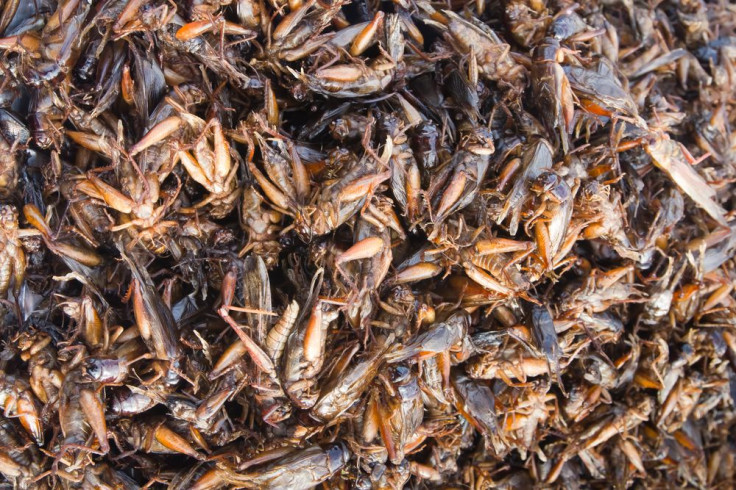Eating Crickets As Protein Source May Not Be Sustainable Enough To Solve World Hunger

One in nine people in the world do not have enough to eat, and this number is expected to grow as the population increases faster than sustainable food sources. Many believe that nutrition-rich insects, particularly crickets, hold the solution to this problem. While crickets could potentially provide the world with an excellent protein alternative, according to a recent study, the mass-cultivation of insects is actually a very complicated process.
A recent study delved deeper into the potential of farming crickets as a large-scale source of protein for the human diet and came up with one major problem: In order to raise healthy crickets, you have to feed them a healthy diet, and doing this makes them no less expensive to keep than chickens.
Biomass, or the actual measurable size of livestock, is strongly influenced by diet, and a team of researchers from University of California, Davis found that this was no different in crickets. For the study, the researchers modified a greenhouse to raise Acheta domesticus crickets, Phys.org reported. The crickets were reared on diets that ranged from grain-based to highly cellulosic, which created major differences in the crickets' biomass.
According to the results, “cricket populations fed minimally processed, municipal-scale food waste and diets composed largely of straw experienced more than a 99 percent mortality before reaching a harvestable size," while crickets fed solid filtrate from food waste processed at an industrial scale were able to reach a harvestable size.
This presents a dilemma in potential cricket-farming. The study concluded that the actual potential to make crickets a sustainment global protein source more effective than the current grain-fed chickens "will depend on capturing regionally scalable organic side-streams of relatively high-quality that are not currently being used for livestock production."
But just because scientists don’t think that crickets are currently the answer to global food supply shortages does not mean they won’t ever be. Insects are eaten by around 2.5 billion people on a regular basis and have been part of many African and Asian diets since before written history. In America, insect-based flour is becoming a popular cooking ingredient. Up to 80 percent of cricket is edible, compared to only 50 percent of a chicken and 40 percent of a cow, and on a large scale this could seriously cut down on the amount of animal waste products.
According to a 2013 UN report, if insect farming is perfected, the switch to insect protein sources could reduce greenhouse gas and ammonia emission, and lead to much less water use than animal rearing, all of which will help to make for a much happier planet and a much healthier human.
Source: Lundy ME, Parrella MP. Crickets Are Not a Free Lunch: Protein Capture from Scalable Organic Side-Streams via High-Density Populations of Acheta domesticus. PLOS ONE. 2015.



























